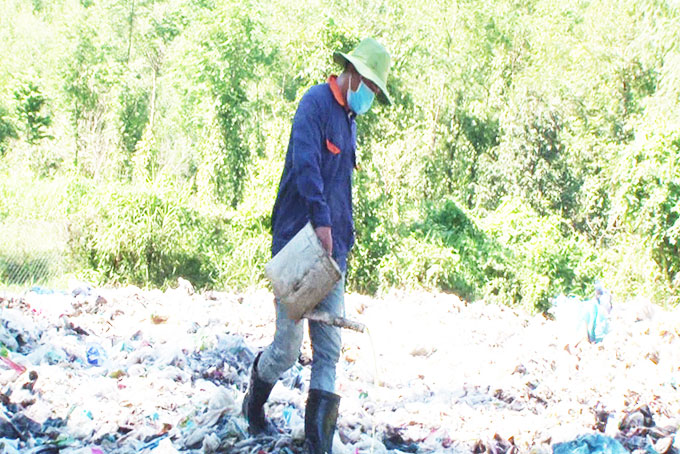
Self-managed household waste collection models in Khanh Son District have proved effective, basically helping improve the environmental hygiene...
Self-managed household waste collection models in Khanh Son District have proved effective, basically helping improve the environmental hygiene on main roads, keeping the rural environment clean and beautiful and promoting the new rural construction in the mountainous area.
There are 5 household waste treatment grounds in the 5 communes of Son Trung, Son Lam, Son Binh, Son Hiep and Ba Cum Bac. Self-managed waste collection groups have been founded to collect domestic waste in the communes three times a week.

|
The waste treatment planning was based on actual circumstances and population density. The operation of the waste treatment grounds and self-managed waste collection groups has proved efficient, helping to raise public awareness of environmental protection, reduce pollution from trash and meet the environmental criteria in the communes. Two communes in Khanh Son have been reported to have fulfilled new rural environmental criteria, according to Vu Ngoc Ha, an expert at Khanh Son District Division of Natural Resources & Environment.
Put into use since 2001, Son Trung rubbish dump located in Ma O Village is for the disposal of waste in To Hap Town, Ta Nia Village and part of Ma O Village in Son Trung Commune. Due to long term use, the dump has become overloaded, causing threat to the environment. Therefore, relevant authority has recently invested in improving the dump site, including using probiotics for waste treatment to reduce the bad smell and the amount of sludge.
Ba Cum Bac dump, 1ha, has been in use in Suoi Da Village since 2016. The self-managed waste collection group collects waste along the Provincial 9 Road running through the commune every Monday, Wednesday and Friday. Each home contributes VND8,000/ month to maintain the operation of the waste collection group. Besides, the Division of Natural Resources & Environment donates 50 garbage bins put along the road. The autonomous waste collection and transport model has helped minimize littering and thus reduce environmental pollution, according to Nguyen Thi Ngoc, a land and construction registrar.
However, there are some difficulties in waste collection and treatment due to the lack of funding and insufficient waste treatment facilities, including waste collection vehicles and dustbins in some places in To Hap Town. At present, burning and burying refuse are still the common form of waste treatment at landfills. The district has boosted propaganda and mobilized locals to put trash in the right place, use probiotics for waste treatment, burn and bury refuse properly in a pollution-free manner. As a permanent solution, a new landfill, 2.5ha, and an incinerator are expected to be built to replace the current dump ground in Son Trung Commune, according to Vu Ngoc Ha.
D.L
Translated by N.T










